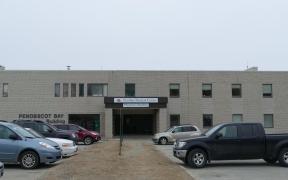What is knee pain?
The knee is your body’s largest joint. Knee problems can be caused by:
- Arthritis
- Injuries, including sprains and strains, fracture, dislocation
- Normal wear and tear
- Osteoporosis
- Overuse
Talk to your provider if you have severe knee pain and knee pain that will not go away.
Knee pain and knee injury symptoms
Seek medical help right away, if:
- The bone or tendon is showing through broken skin.
- You are having a lot of bleeding and pain
- The knee looks dislocated, or out of place
- You are unable to stand or put pressure on your knee.
- You are having a fever or chills.
- You heard a popping noise or felt a snap when you injured your knee.
It is important that you seek treatment for serious knee pain and knee injuries. Make an appointment to see your healthcare provider if you have persistent knee pain or a knee injury does not heal.
Diagnosing knee pain and knee injuries
In addition to a physical exam, your provider may order an imaging test to get a better view of your knee problem. Imaging tests may include:
- X-ray
- CT scan (computerized tomography)
- Ultrasound
- MRI (magnetic resonance imaging)
Blood tests may be ordered to rule out an infection. In some cases, fluid may be removed from the knee using a thin needle and sent to a lab for analysis.
Treatment for knee injury and knee pain
Depending on the cause of your knee problems, your provider may prescribe:
- Medication to ease pain
- Rehabilitation therapy to strengthen your knee
- Injections of medication into your knee joint
- Surgery
What is a knee ligament injury?
The knee is a hinge joint that needs to flex and bend in order for the body to perform various activities. The stability of the knee joint is maintained by four ligaments. They are tough bands of tissue that connect a bone to another bone. Knee ligaments can overstretch or snap when there is too much pressure or stress. There are four ligaments in the knee that are prone to injury:
- Anterior cruciate ligament (ACL) is one of the two major ligaments in the knee. It connects the thigh bone to the shin bone in the knee. ACL injuries or ACL tears are a common cause of disability in the knee.
- Posterior cruciate ligament (PCL) is the second major ligament in the knee and also connects the thigh bone to the shin bone.
- Lateral collateral ligament (LCL) connects the thigh bone to the fibula, the smaller bone of the lower leg on the outer side of the knee.
- Medial collateral ligament (MCL) connects the thigh bone to the shin bone on the inner side of the knee.
Make an appointment to see your primary care provider if you think you have a knee ligament injury. You may be referred to an orthopedist specialist. If you have severe pain or a serious injury, get medical help at your hospital's emergency room or urgent care clinic.
Knee ligament injury causes
Knee problems and knee injuries most often occur during sports or recreational activities, work-related tasks or home projects. Some mechanisms for knee injury include:
- Twisting your knee with the foot planted
- Getting hit on the knee
- Extending the knee too far
- Jumping and landing on a flexed knee
- Stopping suddenly when running
- Suddenly shifting weight from one leg to the other
Serious knee injuries need help right away. Don't wait. Go to your local emergency room or walk-in clinic for immediate care.
Knee ligament injury symptoms
Knee ligament injuries can be hard to diagnose; however, painful symptoms have a rapid onset. Some symptoms of knee ligament injuries include:
- Pain, often sudden and severe
- Loud pop or snap during the injury
- Swelling
- Looseness in the joint
- Inability to put weight on the knee without pain
Have your knee injury or knee pain diagnosed early to avoid further damage and trouble with your knee in the future.
Knee ligament injury diagnosis
To diagnose an ACL injury or other ligament injury, your doctor will give you a thorough exam. You may need:
- X-rays
- MRI (magnetic resonance imaging)
- Other tests.
If your knee is swollen with blood, your doctor may use a needle to drain it.
Knee ligament injury treatment
Knee ligament injury treatment depends on the severity and level of pain. Mild to moderate injuries often will heal on their own.
- Get plenty of rest and avoid bearing weight on your knee.
- Crutches may need to be used for a period of time.
- Ice your knee to reduce pain and swelling.
- Use an elastic bandage, straps or sleeves to compress your knee and to control swelling.
- Elevate your knee on a pillow when you're sitting or lying down.
- Wear a knee brace.
- Take anti-inflammatory pain relievers and painkillers.
- Practice stretching and strengthening exercises. See your provider for recommendations for stretching and strength-building exercises.
Most collateral ligament tears do not require surgery. Certain tears may benefit from surgery, especially for athletes. Rehabilitation is an important part of treatment for knee ligament injuries whether or not surgery is involved. Working with a physical therapist will help restore knee strength and mobility.
Knee ligament injury prevention
Knee injuries can occur during recreational activities or sports, at home, and at work. While majority of knee injuries are accidents, it is important to recognize steps you can take to prevent knee injuries from occurring. Some preventive measures include:
- Perform strengthening exercises to develop strong and flexible quadriceps and hamstring muscles to stabilize knee joints
- Wear proper footwear that is appropriate for the activity or sport to be played. This can lessen the risk of movement that puts stress on the knee.
- Learn the proper technique for sports and activities. Always ask the instructor/trainer any questions you may have.
- Exercise and stay active.
- Some people use knee braces to prevent knee injuries or after a knee injury.































